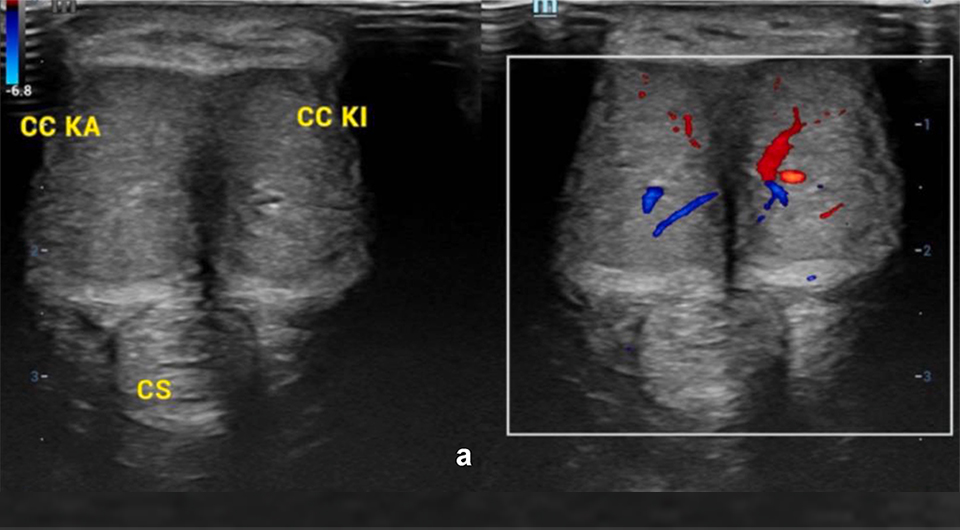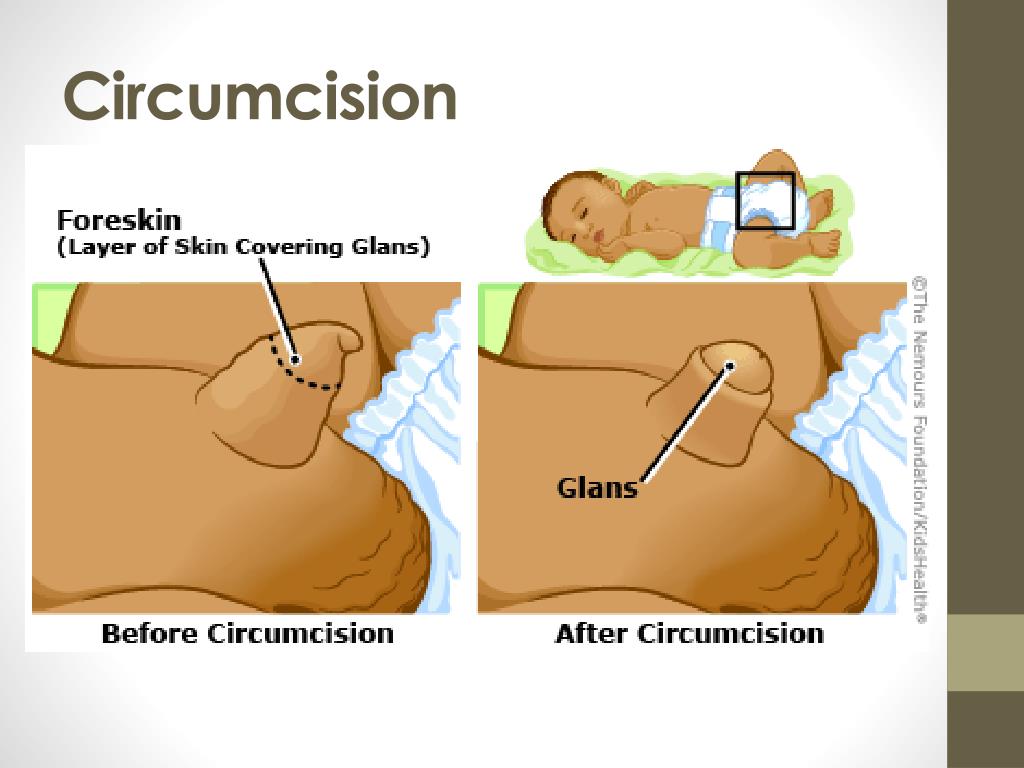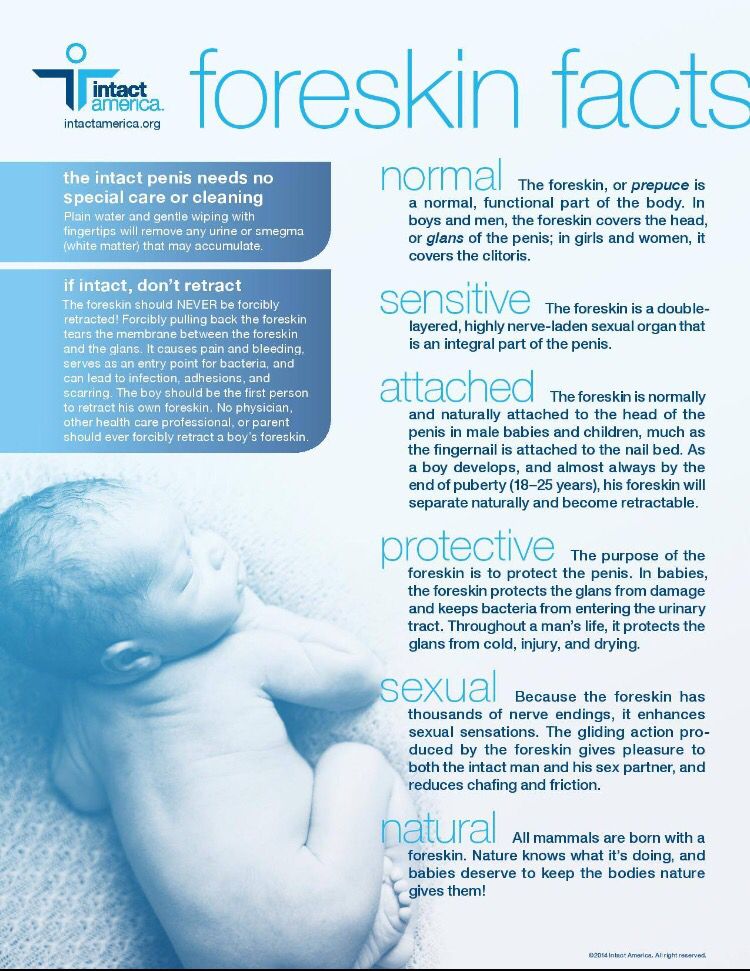Problems retracting foreskin. Phimosis and Paraphimosis in Children: Causes, Symptoms, and Treatment Options
What are phimosis and paraphimosis in children. How are these conditions diagnosed and treated. What complications can arise from foreskin problems in boys. What should parents know about caring for uncircumcised penises.
Understanding Phimosis and Paraphimosis in Children
Phimosis and paraphimosis are two distinct but related conditions affecting the foreskin of the penis in boys. While both involve problems with foreskin retraction, they differ in their presentation and potential complications.
What is Phimosis?
Phimosis is a condition where the foreskin cannot be pulled back (retracted) from the tip of the penis. This is a common and often normal occurrence in young boys, as the foreskin is typically adherent to the glans (head) of the penis at birth and gradually separates over time.
What is Paraphimosis?
Paraphimosis, on the other hand, occurs when the foreskin has been retracted behind the corona (the ridge of the glans) but cannot be returned to its original position. This condition is considered a medical emergency, as it can impair blood flow to the glans and potentially lead to tissue damage if not promptly addressed.

Causes and Risk Factors for Foreskin Problems in Boys
Understanding the underlying causes of phimosis and paraphimosis can help parents and caregivers recognize potential issues and seek appropriate medical attention when necessary.
Causes of Phimosis
- Natural development: In newborns and young boys, phimosis is often a normal part of penile development.
- Forceful retraction: Attempting to retract the foreskin before it naturally separates can lead to scarring and subsequent phimosis.
- Infections: Recurrent balanitis (inflammation of the glans) or balanoposthitis (inflammation of both the glans and foreskin) can contribute to phimotic scarring.
- Genetic factors: Some boys may be predisposed to having a tighter foreskin opening.
Causes of Paraphimosis
- Improper foreskin care: Failure to return the foreskin to its original position after retraction (e.g., during bathing or urination) can lead to paraphimosis.
- Medical procedures: Catheterization or medical examinations may sometimes result in paraphimosis if the foreskin is not properly repositioned.
- Sexual activity: In adolescents, paraphimosis can occasionally occur during or after sexual activity.
Recognizing Symptoms of Phimosis and Paraphimosis
Identifying the symptoms of phimosis and paraphimosis is crucial for timely intervention and appropriate treatment. Parents and caregivers should be aware of the following signs:

Symptoms of Phimosis
- Inability to retract the foreskin fully by age 3 (though this can vary among individuals)
- Ballooning of the foreskin during urination
- Discomfort or pain when attempting to retract the foreskin
- Recurrent urinary tract infections
Symptoms of Paraphimosis
- Swelling of the glans and foreskin
- Pain and discomfort in the penis
- Discoloration of the glans (dark red or bluish tint)
- Difficulty urinating or decreased urinary stream
- Inability to return the retracted foreskin to its original position
Is paraphimosis always a medical emergency? Yes, paraphimosis is considered a medical emergency and requires immediate attention. If left untreated, it can lead to reduced blood flow to the glans, potentially resulting in tissue damage or necrosis.
Diagnostic Approaches for Foreskin Problems
When a child presents with symptoms suggestive of phimosis or paraphimosis, healthcare providers employ various diagnostic methods to assess the condition and determine the most appropriate course of action.

Physical Examination
The primary diagnostic tool for both phimosis and paraphimosis is a thorough physical examination of the penis and foreskin. During this examination, the healthcare provider will:
- Assess the appearance of the foreskin and glans
- Attempt to gently retract the foreskin (in cases of suspected phimosis)
- Evaluate the degree of swelling and discoloration (in cases of suspected paraphimosis)
- Check for signs of infection or inflammation
Medical History
In addition to the physical examination, the healthcare provider will gather information about the child’s medical history, including:
- Age of onset of symptoms
- Previous instances of foreskin problems
- Any history of forceful foreskin retraction
- Recent illnesses or infections
- Family history of foreskin-related issues
Are additional tests required to diagnose phimosis or paraphimosis? In most cases, a physical examination and medical history are sufficient for diagnosis. However, in some instances, additional tests may be ordered to rule out underlying conditions or complications, such as urinary tract infections or rare penile disorders.

Treatment Options for Phimosis in Children
The treatment approach for phimosis in children depends on various factors, including the child’s age, the severity of the condition, and any associated symptoms. Healthcare providers typically employ a step-wise approach, beginning with conservative measures and progressing to more invasive options if necessary.
Conservative Management
- Watchful waiting: For young boys with physiological phimosis, a “wait-and-see” approach is often recommended, as the condition may resolve naturally with time.
- Gentle stretching exercises: Parents may be instructed to gently retract the foreskin during bathing, taking care not to force it beyond its natural limit.
- Topical steroid therapy: Application of a mild corticosteroid cream to the foreskin can help soften and stretch the tissue, facilitating retraction.
Surgical Interventions
If conservative measures fail to resolve the phimosis or if complications arise, surgical options may be considered:
- Preputioplasty: This procedure involves making a small incision in the tight part of the foreskin to allow for easier retraction, while preserving the foreskin.
- Circumcision: Complete removal of the foreskin may be recommended in cases of severe or recurrent phimosis, especially in older children or adolescents.
How long should topical steroid therapy be used for phimosis? Topical steroid therapy is typically prescribed for 4-8 weeks. If improvement is seen, the treatment may be continued for up to 3 months. However, if no progress is observed after 4-6 weeks, alternative treatments should be considered.

Managing Paraphimosis: Urgent Interventions and Follow-up Care
Paraphimosis requires immediate medical attention to prevent potential complications. The primary goal of treatment is to reduce swelling and return the foreskin to its normal position over the glans.
Emergency Management
- Manual reduction: The healthcare provider will attempt to gently squeeze the glans to reduce swelling while simultaneously pushing the foreskin forward over the glans.
- Ice application: Applying ice to the affected area can help reduce swelling and facilitate manual reduction.
- Osmotic agents: In some cases, substances like granulated sugar or mannitol may be applied to the swollen tissue to draw out fluid and decrease edema.
Surgical Interventions
If manual reduction is unsuccessful, surgical options may be necessary:
- Dorsal slit: A small incision is made in the foreskin to relieve constriction and allow repositioning.
- Emergency circumcision: In severe cases or when other methods fail, complete removal of the foreskin may be required.
Post-Treatment Care
After successful reduction of paraphimosis, follow-up care is essential:

- Monitoring for recurrence
- Education on proper foreskin care and hygiene
- Consideration of elective circumcision to prevent future episodes
Can paraphimosis recur after successful treatment? Yes, paraphimosis can recur, especially if the underlying cause (such as a tight foreskin) is not addressed. Proper foreskin care and hygiene practices are essential to minimize the risk of recurrence.
Potential Complications and Long-term Outlook
While most cases of phimosis and paraphimosis can be successfully treated, it’s important to be aware of potential complications and the long-term prognosis for affected children.
Complications of Untreated Phimosis
- Recurrent urinary tract infections
- Balanitis (inflammation of the glans)
- Difficulty with urination
- Sexual dysfunction in adolescence or adulthood
- Increased risk of penile cancer (in rare cases of long-standing phimosis)
Complications of Untreated Paraphimosis
- Ischemia (reduced blood flow) to the glans
- Tissue necrosis
- Gangrene (in severe, untreated cases)
- Urinary retention
Long-term Outlook
The prognosis for children with phimosis and paraphimosis is generally good when appropriate treatment is provided:

- Most cases of physiological phimosis resolve spontaneously or with conservative management by adolescence.
- Surgical interventions for persistent phimosis are typically successful with low complication rates.
- Prompt treatment of paraphimosis usually results in full recovery without long-term consequences.
- Recurrence of paraphimosis can be prevented through proper foreskin care and, in some cases, elective circumcision.
Do all cases of phimosis require treatment? No, not all cases of phimosis require treatment. Physiological phimosis in young children often resolves on its own by puberty. Treatment is typically recommended only if there are associated symptoms, recurrent infections, or if the condition persists into adolescence.
Preventive Measures and Foreskin Care Guidelines
Proper foreskin care and hygiene practices can help prevent complications and promote overall penile health in uncircumcised boys. Parents and caregivers should be educated on the following guidelines:
General Foreskin Care
- Avoid forceful retraction of the foreskin in infants and young children.
- Gently clean the penis during bathing, including the area under the foreskin as it naturally separates.
- Teach older boys to retract the foreskin during urination and bathing, ensuring it is returned to its original position afterward.
- Encourage good overall hygiene practices, including regular washing of the genital area.
When to Seek Medical Attention
Parents should consult a healthcare provider if they observe:

- Persistent difficulty retracting the foreskin beyond age 3-4
- Pain or discomfort during foreskin retraction
- Recurrent infections or inflammation of the penis
- Changes in urine flow or difficulty urinating
- Any signs of paraphimosis (swelling, discoloration, inability to return the foreskin)
Education and Awareness
Promoting awareness about normal foreskin development and potential issues can help parents and caregivers:
- Understand the natural process of foreskin separation
- Recognize the difference between physiological and pathological phimosis
- Identify early signs of potential complications
- Make informed decisions about treatment options when necessary
At what age should boys be taught to retract their foreskin during bathing? Boys should be encouraged to begin retracting their foreskin during bathing around age 3-4, or when the foreskin naturally begins to separate from the glans. However, this process should never be forced, and boys should be taught to be gentle to avoid injury.

By following these preventive measures and care guidelines, parents can help ensure the proper development and health of their uncircumcised sons’ penises, minimizing the risk of complications such as phimosis and paraphimosis. Regular check-ups with a pediatrician or family doctor can also help monitor foreskin development and address any concerns promptly.
Phimosis and Paraphimosis in Children
ABOUT
CAUSES
DIAGNOSIS
TREATMENT
NEXT STEPS
What is phimosis and paraphimosis in children?
Phimosis and paraphimosis are problems with the foreskin of the
penis. Phimosis is when a foreskin can’t be pulled down (retracted) from the tip of the
penis. This is a common problem in young boys. Paraphimosis is when the foreskin is
retracted but can’t move back up. This can prevent normal blood flow in the penis, and
may cause serious problems.
What causes phimosis and paraphimosis in a child?
Phimosis is caused by a tightening
of the opening of the foreskin. This is normal in a newborn baby. Over time the foreskin
loosens and can be pulled down more easily. By age 17, most boys will be able to fully
retract their foreskin. Phimosis can also occur if the foreskin is forced back before it
Phimosis can also occur if the foreskin is forced back before it
is ready. This can cause a fibrous scar to form. This can stop the foreskin from
retracting in the future.
Paraphimosis is caused when the
foreskin is retracted behind the crown (corona) of the penis. The foreskin is too tight
to be moved back to the tip of the penis.
What are the symptoms of phimosis and paraphimosis in a child?
Symptoms can be a bit different in
each child.
The most common symptoms of phimosis include:
- Bulging of the foreskin when
urinating - Not able to fully retract the foreskin by age 3. In some boys this may take longer.
The most common symptoms of paraphimosis include:
- Swelling of the tip of the penis when
the foreskin is pulled back - Pain
- Not able to pull the foreskin back
over the tip of the penis - Tip of the penis is dark red or blue
in color - Pain when urinating
- Decreased urinary stream
The symptoms of phimosis and
paraphimosis can seem like other health conditions. Have your child see his healthcare
Have your child see his healthcare
provider for a diagnosis. A paraphimosis is an emergency medical condition. Seek medical
care right away if you think your child has paraphimosis.
How are phimosis and paraphimosis diagnosed in a child?
The healthcare provider will ask about your child’s symptoms and health history. He or she will give your child a physical exam. The physical exam will include examining the penis and foreskin.
How are phimosis and paraphimosis treated in a child?
Treatment will depend on your child’s symptoms, age, and general health. It will also depend on how severe the condition is.
Treatment for repeated phimosis may include:
- Putting a steroid cream on the
foreskin up to 3 times a day for 1 month. This is to loosen the skin. - Having surgery to remove all or part
of the foreskin (circumcision) for a child age 10 or older who still has bulging of
the foreskin when urinating
Treatment for paraphimosis may include:
- Lubricating the foreskin and tip of the penis, then gently squeezing the tip of the penis while pulling the foreskin forward
- Making a small cut (incision) in the foreskin
- Having surgery to remove all or part of the foreskin (circumcision)
Talk with your child’s healthcare providers about the risks, benefits, and possible side effects of all treatments.
What are possible complications of phimosis and paraphimosis in a child?
Possible complications can include:
- Pain
- Infection
- Trouble urinating
- Death of tissue (necrosis) in the tip of the penis
When should I call my child’s healthcare provider?
Call the healthcare provider if your child has:
- Symptoms that don’t get better, or get worse
- New symptoms
Key points about phimosis and paraphimosis in children
- Phimosis and paraphimosis are problems with the foreskin of the penis.
- Phimosis is when a foreskin can’t be pulled down (retracted) from the tip of the penis. This is a common problem in young boys.
- Paraphimosis is when the foreskin is retracted but can’t move back up. This can prevent normal blood flow in the penis, and may cause serious problems.

- Treatment for either problem may include steroid cream, lubrication, or surgery to remove the foreskin.
- Possible complications can include trouble urinating and death of tissue (necrosis) in the tip of the penis.
Next steps
Tips to help you get the most from a visit to your child’s healthcare provider:
- Know the reason for the visit and what you want to happen.
- Before your visit, write down questions you want answered.
- At the visit, write down the name of a new diagnosis, and any new medicines, treatments, or tests. Also write down any new instructions your provider gives you for your child.
- Know why a new medicine or treatment is prescribed and how it will help your child. Also know what the side effects are.
- Ask if your child’s condition can be treated in other ways.
- Know why a test or procedure is recommended and what the results could mean.

- Know what to expect if your child does not take the medicine or have the test or procedure.
- If your child has a follow-up appointment, write down the date, time, and purpose for that visit.
- Know how you can contact your child’s provider after office hours. This is important if your child becomes ill and you have questions or need advice.
Phimosis | UCSF Department of Urology
What is Phimosis?
Phimosis is defined as the inability to retract the skin (foreskin or prepuce) covering the head (glans) of the penis. Phimosis may appear as a tight ring or “rubber band” of foreskin around the tip of the penis, preventing full retraction. Phimosis is divided into two forms: physiologic and pathologic. Current incidence of phimosis is about 1% in 7th grade boys.
Physiologic phimosis: Children are born with tight foreskin at birth and separation occurs naturally over time. Phimosis is normal for the uncircumcised infant/child and usually resolves around 5-7 years of age, however the child may be older.
Phimosis is normal for the uncircumcised infant/child and usually resolves around 5-7 years of age, however the child may be older.
Pathologic phimosis: Phimosis that occurs due to scarring, infection or inflammation. Forceful foreskin retraction can lead to bleeding, scarring, and psychological trauma for the child and parent. If there is ballooning of the foreskin during urination, difficulty with urination, or infection, then treatment may be warranted.
Care of Uncircumcised Penis:
No special care is required for foreskin in infancy. The foreskin should not be forcibly retracted, however gentle retraction is okay. In the first few years of life, gentle retraction with cleansing underneath the foreskin is sufficient during diaper changes or bathing and will result in progressive retraction over time. Once the child is older and the foreskin retracts fully, he will learn to retract, cleanse and dry underneath the foreskin as part of his hygiene routine. After retraction, the foreskin should be pulled back over the head of the penis and returned to the normal position.
After retraction, the foreskin should be pulled back over the head of the penis and returned to the normal position.
Smegma:
Smegma is a collection of skin cells from the glans penis and inner foreskin that is often noted with retraction of the foreskin. This natural skin shedding helps to separate the foreskin from the head of the penis. Smegma may appear as white pearls underneath the skin, which can easily be washed off once the foreskin is retracted.
How is phimosis diagnosed and evaluated?
In physiologic phimosis, benign (non-life threatening) conditions may occur that are common in uncircumcised males, including; cysts related to smegma production/trapping and transient painless ballooning of the foreskin during urination. These are considered normal variations that usually resolve with daily gentle manual retraction.
Pathologic phimosis that does not resolve naturally or causes other complications, including; penile irritation or bleeding, ballooning of the foreskin with urination resulting in forceful/difficult urination, urinary retention, painful urination (dysuria), painful erections, recurrent infections of the foreskin (balanoposthitis), paraphimosis (foreskin stuck in the retracted position behind the head of the penis), or urinary tract infections may require further treatment. Your medical provider will refer your child to a pediatric urologist for further evaluation.
Your medical provider will refer your child to a pediatric urologist for further evaluation.
How is phimosis treated?
Treatments for phimosis vary depending on the child and severity of phimosis. Treatments may include: gentle daily manual retraction, topical corticosteroid ointment application or circumcision.
Topical corticosteroid therapy:
Medical providers may recommend topical steriod ointment application for children with phimosis. This is an effective treatment in most males. These topical ointments are used to help soften the tight foreskin around the penis, so the foreskin may be easily retracted. Your provider will demonstrate how to apply the ointment to the tight ring of foreskin and/or head of the penis. The ointment is massaged into the affected areas twice daily for 6-8 weeks along with manual stretching/retraction twice daily. Once the foreskin can be fully retracted, the ointment is discontinued and manual daily retraction (during warm baths and urination for the potty trained child) will prevent phimosis from reoccurring. The most common corticosteroids used are hydrocortisone 2.5%, betamethasone 0.05%, triamcinolone 0.01%, and fluticasone propionate 0.05%.
The most common corticosteroids used are hydrocortisone 2.5%, betamethasone 0.05%, triamcinolone 0.01%, and fluticasone propionate 0.05%.
Circumcision:
Male circumcision refers to the surgical removal of the foreskin. Circumcision is often not required for treatment of phimosis. In some rare cases your pediatric urologist may recommend circumcision due to failure of steroid ointment, pathologic phimosis, paraphimosis (foreskin stuck in the retracted position behind the head of the penis), recurrent urinary tract infections, or severe/recurrent balanoposthitis.
90,000 diagnostics and treatment at the Research Institute of Urology. ON THE. Lopatkin.
Table of contents
Pediatric urology deals with the diagnosis and treatment of diseases and defects of the genitourinary and urinary systems in children. Today, according to expert estimates, every fourth child in the Russian Federation has urological problems. Pediatric urology is aimed at early detection of pathologies and their treatment. All parents should remember that they must be very attentive to the health of their children, because many urological diseases often begin without any obvious symptoms. If diseases of the genitourinary system are not cured in a timely manner in early childhood, then in adulthood a person may encounter irreversible processes that will be expensive and difficult to treat, and sometimes impossible.
All parents should remember that they must be very attentive to the health of their children, because many urological diseases often begin without any obvious symptoms. If diseases of the genitourinary system are not cured in a timely manner in early childhood, then in adulthood a person may encounter irreversible processes that will be expensive and difficult to treat, and sometimes impossible.
Your child was diagnosed with: phimosis ?
We offer you a brief but very detailed overview of this disease. It was prepared by employees of the Children’s Uroandrological Department of the N.A. Lopatkin – a branch of the Federal State Budgetary Institution “NMITs Radiology” of the Ministry of Health of Russia.
Introduction
Phimosis (narrowing of the foreskin) is one of the most common diseases in the practice of a pediatric urologist and pediatric surgeon. The term phimosis is of Greek origin, meaning (muzzle, muzzle), this is a pathological condition in which it is impossible to expose the glans penis. The main cause of phimosis in patients is the presence of a dense, scarring ring of the foreskin.
The main cause of phimosis in patients is the presence of a dense, scarring ring of the foreskin.
Classification of phimosis
Physiological phimosis.
There are physiological, hypertrophic and cicatricial narrowing of the foreskin. Treatment, this pathology, only operational, by excision of scar tissue. However, this does not mean that all children need surgery. The congenital narrow opening of the preputial sac at the point of transition of the outer leaf of the foreskin to the inner one is a “physiological” narrowing of the foreskin.
In this situation, the skin of the foreskin does not have cicatricial changes, it is soft and stretches well. When trying to quickly or roughly remove the head, radial
cracks in the junction of the inner and outer layers of the foreskin.
Hypertrophic phimosis or proboscis foreskin: a condition in which there is excess foreskin, when trying to expose the glans penis, the prepuce is pulled into the proboscis. Children with hypertrophic phimosis are usually malnourished and overweight.
Children with hypertrophic phimosis are usually malnourished and overweight.
Hypertrophic or proboscis phimosis
Cicatricial phimosis is a condition of the foreskin in which there are cicatricial changes in the foreskin (radial white stripes), when trying to remove the head, a dense cicatricial ring was determined, which did not allow examining the head. Inflammatory diseases of the foreskin (balanoposthitis, fungal inflammation) or trauma of the foreskin (rough, simultaneous removal of the glans penis) can lead to such a situation.
Paraphimosis is a pathological condition characterized by the abduction of the narrow foreskin behind the glans penis, at the level of the coronal sulcus, it can pinch the frenulum and cause swelling of the glans penis. Paraphimosis requires emergency care, since prolonged compression leads to impaired blood circulation and there is a risk of developing necrosis (death) of the head.
Cicatricial phimosis
Treatment
The presence of physiological or hypertrophic phimosis in children, as a rule, does not require surgical treatment. The solution to these states is to apply gradual gentle stretching of the foreskin (avoiding even minimal tears and cracks) . Only in a small number of cases with hypertrophic phimosis is surgical assistance required.
The solution to these states is to apply gradual gentle stretching of the foreskin (avoiding even minimal tears and cracks) . Only in a small number of cases with hypertrophic phimosis is surgical assistance required.
Indications for surgical treatment are recurrent balanoposthitis and recurrent urinary tract infections against the background of anomalies in the development of the foreskin. Cicatricial phimosis is an absolute indication for surgical treatment. Operative treatment of phimosis consists in radical (full) or pastic (partial) circumcision of the foreskin of the child. When performing a partial circumcision, part of the foreskin is preserved, but this surgical intervention is accompanied by the risk of recurrence of the disease. During the operation, the adhesions (synechia) between the inner layer of the foreskin and the head are also separated, the plastic of the frenulum (elimination of its shortening) and meatoplasty (expansion of the external opening of the urethra) are performed. A contraindication to circumcision is the presence of congenital anomalies in the development of the penis and urethra (hypospadias, epispadias, hidden penis), since the foreskin can be a material for performing reconstructive plastic surgery.
A contraindication to circumcision is the presence of congenital anomalies in the development of the penis and urethra (hypospadias, epispadias, hidden penis), since the foreskin can be a material for performing reconstructive plastic surgery.
In the case of paraphimosis, the physician compresses the edematous tissue of the foreskin and attempts to pull back the taut, tense skin of the foreskin through the glans penis. If the manipulation is ineffective, the compression ring is cut along the anterior-upper surface of the penis.
Where can children’s urological diseases be cured?
Treatment of diseases of the penis – symptoms and causes
There are quite a few types of conditions and diseases of the penis. Some of them are minor and do not cause much problems, and some require emergency medical care or surgery. Diseases of the penis can be congenital or develop over time.
General symptoms of diseases of the genital organ
- pain, swelling, burning;
- abnormal discharge;
- itchy rash, blisters, sores or small red dots;
- blood in urine or semen;
- an erection that lasts 4 hours or longer.

Types of diseases of the penis
The group of pathologies of the penis includes:
Balanitis (balanoposthitis)
Balanitis is an inflammation of the foreskin and glans penis. The most common causes are the presence of pathogenic flora (E. coli, staphylococci), candidiasis, papillomavirus, and poor hygiene (especially in uncircumcised men). Symptoms of balanitis may include penile pain, swelling, itching, rash, and foul-smelling discharge. If an infection is the cause, treatment will include antibiotics and antifungals. If balanitis is severe and recurs, circumcision may be the best treatment option.
Penile warts
The causative agent of the disease is the human papillomavirus. Despite the benign nature of the neoplasms, the risk of oncological diseases, including penile cancer, is high. Depending on the stage of the disease, warts are removed by surgery or laser therapy.
Epispadias
Epispadias is a rare birth defect characterized by the incomplete development of the urethra, resulting in an inability to properly expel urine from the body. Symptoms of epispadias in men include an abnormally located opening in the urethra, an enlarged pubic bone, curvature of the penis, urinary incontinence, and urinary tract infections. Cases range from mild to severe. In mild cases, surgery may not be required, but in most cases, epispadias requires surgical correction. The goal of treatment is to maximize the function of the penis as well as to give it a normal appearance. In cases where the bladder is affected, surgery should also create a pathway for the normal passage of urine and help maintain fertility.
Symptoms of epispadias in men include an abnormally located opening in the urethra, an enlarged pubic bone, curvature of the penis, urinary incontinence, and urinary tract infections. Cases range from mild to severe. In mild cases, surgery may not be required, but in most cases, epispadias requires surgical correction. The goal of treatment is to maximize the function of the penis as well as to give it a normal appearance. In cases where the bladder is affected, surgery should also create a pathway for the normal passage of urine and help maintain fertility.
Peyronie’s disease
Peyronie’s disease occurs when scar tissue called plaque forms inside the penis and makes the erection crooked and painful. In many men, an erect penis is slightly curved, and this does not cause any problems. But when it’s painful or the bend is significant, it can lead to erectile dysfunction and even make intercourse impossible. Signs of Peyronie’s disease include scar tissue that can be felt under the skin of the penis, significant bending of the penis, difficulty getting or maintaining an erection, penile pain and shortening. Sometimes Peyronie’s disease is mild and does not cause serious problems. In this case, treatment may not be required. However, if your penis hurts or bends causing problems during intercourse, see a urologist. If the disease is severe, surgical intervention is possible.
Sometimes Peyronie’s disease is mild and does not cause serious problems. In this case, treatment may not be required. However, if your penis hurts or bends causing problems during intercourse, see a urologist. If the disease is severe, surgical intervention is possible.
Phimosis and paraphimosis
This is a narrowing of the foreskin and the inability to expose the glans penis. Mostly of a physiological nature. It occurs in more than 90% of newborn boys. Physiological phimosis disappears by 6-7 years. Pathological phimosis develops as a result of trauma to the penis, poor hygiene. Paraphimosis is a narrowing of the foreskin under the head of the penis. It develops as a complication after phimosis. This pathology is eliminated exclusively by surgery. Symptoms of paraphimosis include the inability to return the foreskin to its normal position, difficulty with ejaculation and urination, discoloration or bruising of the penis, and swelling.
Priapism
Priapism is a persistent erection that lasts more than four hours and does not go away with orgasm.


